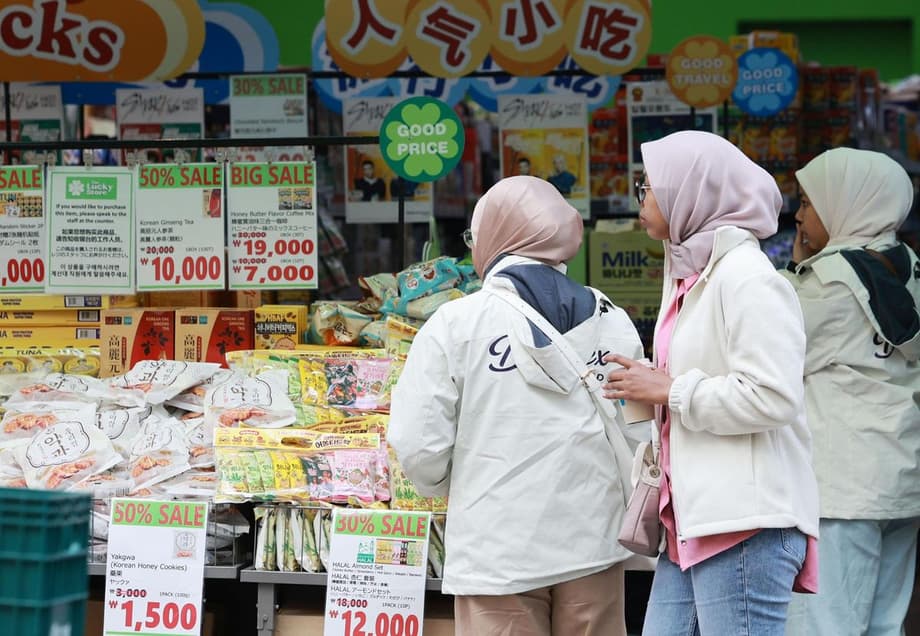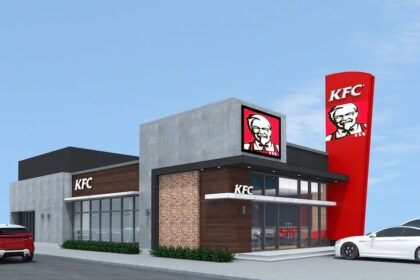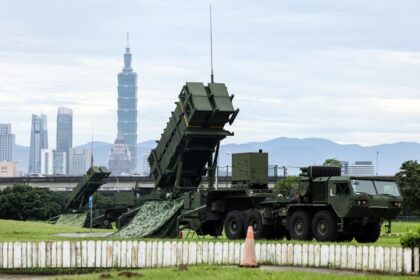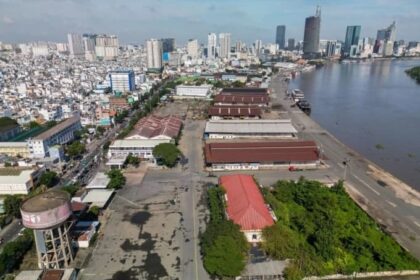From kimchi fame to convenience store culture
Visitors once flew to South Korea for headline dishes like kimchi, bulgogi, and bibimbap. Now many are planning entire days around gimbap counters, instant noodles by the river, and treasure hunts through convenience store aisles. A detailed analysis of foreign credit card transactions by the Korea Tourism Organization (KTO) from 2018 through July this year shows a steady shift in spending toward what locals consider everyday food. Fast, affordable, and endlessly varied, these meals are turning daily Korean routines into the highlights of a trip.
- From kimchi fame to convenience store culture
- Why quick, everyday food is winning
- Tourism numbers put the food rush in context
- Inside the convenience store experience
- Burgers, bakeries, and cafes with a Korean twist
- Tradition and fine dining still set the stage
- Policy and promotion meet traveler demand
- The K wave link: pop culture, noodles, and shareable moments
- Tips for eating like a local, even on a short trip
- Key Points
The figures are striking. Ice cream showed the fastest annual growth in tourist card spending at 35 percent, followed by convenience store meals at 34 percent and croffles at 25.5 percent. In July, purchases of rice cakes and traditional sweets jumped 76.9 percent year over year, while noodles and dumplings rose 55.2 percent and pork bone soup increased 44 percent. From January to July this year, cafes recorded about 8.9 million transactions by foreign visitors, bakeries 3 million, and burger restaurants 2.3 million. Convenience stores led all categories with roughly 13 million transactions in the same period, underscoring how integral these outlets have become to the tourist experience.
Another telling detail is where visitors are choosing their burgers. Six of the ten most popular burger brands among international visitors are homegrown chains, a sign that domestic franchises are shaping how outsiders view Korean casual dining. Travelers are also being lured by seasonal and regional menu specials, from sweet potato loaded sandwiches to sesame butter snacks that appear only for a short window. The trend mirrors a broader reality: food is now a primary reason to visit. In a 2024 KTO survey, 15.7 percent of potential visitors listed a food tour as their top motivation, ahead of shopping and entertainment. Industry tallies show culinary experiences account for close to one fifth of total tourist spending.
Why quick, everyday food is winning
Everyday food has three advantages for travelers. It is easy to find, easy to understand, and easy to share. Convenience stores, bakeries, burger joints, and cafe chains are on almost every major block in Seoul and Busan. Menus are familiar but carry a Korean twist. A fried chicken sandwich comes with gochujang glaze. Latte art nods to pop culture. Even the cup noodle aisle offers premium toppings and regional broth flavors. Prices are accessible, so visitors can taste multiple items in a single day without committing to long waits or big bills.
Pop culture is part of the draw. K dramas and variety shows have turned simple scenes into rituals, from late night instant noodles cooked at a convenience store table to gimbap packed for a riverside picnic. Social media then spreads those rituals around the world, making them feel both relatable and new. Tourists post their own clips, friends add the stops to travel lists, and the cycle repeats with fresh products and limited editions that reward curiosity.
Lee Mi sook, who leads tourism data strategy at the KTO, describes how quickly these habits now spread and how her team is responding. She said the data confirms that food is a core part of how visitors connect with Korea in daily life.
Trends now spread globally in real time, turning even routine Korean meals into meaningful cultural exchanges. We will continue to reflect these patterns in policy and marketing to show how Korean daily life enriches visitor experiences.
The social media feedback loop
Viral content is not just entertainment. It moves products. A recent example is honey rice cake cereal, a playful twist that took off in overseas feeds. Posts topped hundreds of thousands of likes and encouraged local companies to release new items inspired by the trend. The same loop shows up with croffles, triangle gimbap hacks, and instant noodle upgrades. Video creators demonstrate quick recipes, travel bloggers map out convenience store tours, and the result is a consistent stream of first time purchases from visitors who want to try what they watched.
Tourism numbers put the food rush in context
South Korea’s inbound travel has rebounded, which gives everyday food more chances to shine. The country welcomed 17.5 million international visitors in 2019, then saw a sharp drop during the pandemic. Recovery has been steady. In 2024, arrivals reached about 16.36 million, closing in on the pre pandemic high. From January through March 2025, South Korea received around 3.42 million visitors, a slight year over year gain for the quarter. The average stay hovered near 7.8 days in 2024.
Money is flowing back too. International visitors spent more than 16 billion US dollars in 2024. Average spending per inbound trip was a little over 1,000 US dollars. A sizable share of that money is going straight into food, drink, and cafes. The structure of Korean cities supports this. Dense neighborhoods mix restaurants with cultural sights, and efficient transit allows visitors to hop between markets, bakeries, and convenience stores in a single afternoon. The result is a form of culinary sightseeing that fits comfortably into any itinerary, whether museum hopping in central Seoul or beach days in Busan.
Inside the convenience store experience
For many visitors, the convenience store is a starter course in Korean daily life. The experience is different from convenience outlets in many countries. Most locations stock microwaves, hot water taps for noodles, and compact seating. A traveler can choose a gimbap roll, heat a boxed rice bowl, crack open a yogurt drink, and sit down to eat under bright lights with K pop on the speakers. The shelves are reorganized every few weeks with seasonal treats and limited flavors, which turns browsing into a hunt.
Social media analysis backs up how much attention these stores receive. About 40 percent of posts about Korean convenience stores focus on food. The top keywords are ramyeon at around 14 percent, coffee near 10 percent, and snacks around 7 percent. That aligns with the heavy transaction counts recorded at these outlets between January and July. For tourists, it feels like a tasting room for daily Korean life, one that is open late and takes international cards.
What visitors buy most
Ice cream sits at the top of the growth chart for foreign card spending. The freezers mix local classics with new flavors tied to dramas and seasonal fruits. Croffles, a cross between a croissant and a waffle, keep drawing lines at cafes, and they have become a casual dessert staple for first time visitors. Instant noodles are another safe bet, especially when upgraded with convenience store eggs, cheese, or dumplings. Triangle gimbap, hot bar skewers, and ready to heat bentos round out a typical haul. Coffee, both from cafes and cold cans, remains a reliable companion for day long walks.
Burgers, bakeries, and cafes with a Korean twist
Korean bakeries blend French techniques and local tastes, so shelves hold red bean butter rolls, injeolmi covered pastries, and cream breads flavored with matcha or black sesame. Cafes are equal parts drink lab and aesthetic backdrop, which explains the high number of foreign transactions at coffee shops this year. Burger spots offer a familiar format, which helps visitors try bolder toppings. Data shows that six of the ten burger brands favored by visitors are domestic. Global players also design Korea only items and thematic interiors, which turn a quick meal into a cultural stop. One example is a sweet potato mozzarella burger using produce from the Iksan region, which links a fast food sandwich to a specific place.
The result is comfort with a sense of discovery. Travelers pair a known category, like a burger or latte, with a new ingredient, texture, or ritual. The city does the rest. Busy sidewalks, neon lit storefronts, and late opening hours create a casual, open ended dining environment where spontaneity is rewarded. Trying one bite often leads to the next.
Tradition and fine dining still set the stage
Everyday food is rising, but it is not replacing the old guard. It is sitting alongside it. The revival of rice cakes and hangwa shows how heritage can thrive on modern platforms. KTO data tracked a sharp year over year increase in spending on these traditional sweets in July, boosted by viral content. Fermentation culture remains at the heart of Korean cuisine, from jang to kimchi, and it has been recognized by UNESCO for its cultural value. Visitors can taste the spectrum in a single day, from street markets to tasting menus.
South Korea’s fine dining scene is flourishing. The MICHELIN Guide has broadened its coverage, and star awards highlight both modern Korean cooking and the country’s increasingly diverse restaurant landscape. In Seoul, the contemporary Korean restaurant Mingles earned a third star, while the presence of a starred Mexican restaurant signals how open and experimental the dining scene has become. Add to that a deep roster of recommended eateries, and travelers can move easily between a croffle at breakfast and a multi course dinner with local produce in the evening.
Korean drinks go global
Korean sool, especially soju and makgeolli, is finding new fans abroad. Craft producers outside Korea are learning traditional methods and experimenting with local grains and water. Travel writers and trend forecasters point to the growing presence of these drinks in bars and bottle shops. Visitors who encounter soju in Korea are often surprised by the range, from clear, crisp styles to nuanced artisanal bottles served at restaurants focused on pairing.
Policy and promotion meet traveler demand
Government and industry see food as a strategic anchor for travel. The Taste Your Korea project, launched in 2024 by the Ministry of Culture, Sports and Tourism and the KTO, designated 33 regional culinary landmarks. The list ties dishes and ingredients to places, from Jeonju bibimbap and Chuncheon dakgalbi to Jeju seafood. Many of these stops integrate tastings with performances, tours, and seasonal festivals so that eating is part of a broader cultural route. The 100 year Store listings guide visitors to long running shops known for a specialty, whether that is knife cut noodles, soy cured crab, or traditional confectionery.
Digital tools are making this exploration easier. KTO and local partners are rolling out artificial intelligence powered restaurant guides and instant translation services. QR menus reduce friction at busy spots. Virtual food tours help future visitors build appetite and confidence. These upgrades play well with the everyday food boom because they remove barriers and let travelers focus on choices rather than logistics.
Food travel also intersects with wellness and culture. The International H Wellness Festa scheduled for late October 2025 on the Yeongdeok coast combines traditional Korean medicine sessions, yoga and meditation, and food healing zones where visitors can taste herbal teas and seasonal dishes. Yeongdeok County Governor Kim Kwangyeol framed the event as part of a broader shift in how people travel.
Wellness has become a lifestyle and an industry for the future, and the festival aims to revitalize Korea’s healing tourism industry and advance Yeongdeok’s wellness and tourism industries.
Beyond Korea’s borders, events like the Rang De Korea festival in Delhi recreate the energy of Seoul streets with food stalls, K pop performances, and cultural workshops. These previews encourage first time trips by giving prospective travelers a sample of daily Korean life before they book a flight.
The K wave link: pop culture, noodles, and shareable moments
K pop and K dramas remain the largest cultural magnets, but K food has grown into a headline act in its own right. Media tracking by public agencies in Korea shows that food now commands a large share of global Hallyu coverage, especially in North America. Kimchi, Korean fried chicken, and spicy instant ramen are part of everyday conversations. Videos featuring instant noodle hacks or fiery Buldak ramen challenges contribute to the thrill. Safety issues sometimes surface, like a temporary recall in Denmark related to spiciness, which reminds travelers to know their heat tolerance. The overall effect is a rising curiosity that translates into orders at home and then into deeper experiences once people land in Korea.
Trends for 2025 point in the same direction. Global forecasts emphasize playful eating, supercharged sandwiches, clarified cocktails, and explicit love for instant noodles dressed up with premium toppings. Korean drinks are spreading, local snacks are easy to pack as gifts, and every market stall or convenience store shelf offers an unexpected flavor combination that photographs well and tastes even better.
Tips for eating like a local, even on a short trip
It does not take a week to experience Korean daily food. A single day can cover a lot of ground with a bit of planning. Start at a cafe for an Americano or a specialty latte. Try a croffle or an injeolmi pastry. Visit a convenience store around midday, assemble a quick meal with triangle gimbap, a warm rice bowl, and yogurt or fruit jelly. Save space for a late afternoon street snack, perhaps hotteok in winter or a seasonal ice cream flavor in summer. In the evening, head to a casual spot for pork bone soup or a noodle set with dumplings, then finish with a convenience store ice cream back at the hotel.
A few practical notes help the experience go smoothly:
- Load a T Money or Cashbee card for subways and buses, and keep a small balance for store purchases.
- Use self order kiosks at fast casual spots. Most have language toggles. Photos on menu boards make ordering easier.
- Learn basic recycling rules. Many stores separate paper cups, plastic, and food waste. Follow signs near the seating area.
- Expect cashless payments at many locations. Foreign credit cards are widely accepted in cities.
- Mind spice levels. Ask for less spicy options if needed, and check labels on instant noodles.
- Vegetarian and halal options exist but may require a bit of research. Larger neighborhoods and chain bakeries offer clearer labeling.
Key Points
- KTO data shows strong growth in tourist spending on everyday foods like ice cream, convenience store meals, and croffles.
- Convenience stores recorded about 13 million foreign card transactions from January to July, outpacing other K food categories.
- Cafes, bakeries, and burger restaurants are major stops, with six of the top ten burger brands used by visitors being domestic chains.
- Social media drives demand for items like honey rice cake cereal, instant noodle upgrades, and seasonal snacks.
- In 2024, South Korea welcomed about 16.36 million visitors, with an average stay near 7.8 days and more than 16 billion US dollars in spending.
- Food tours are now a top travel motivation, with 15.7 percent of potential visitors choosing food as their primary reason to visit.
- Programs like Taste Your Korea and the 100 year Store listings connect regional dishes and historic shops with culture and festivals.
- Korean soju and makgeolli are gaining global traction, while fine dining continues to expand under the MICHELIN Guide.
- Events such as the Yeongdeok wellness festival and Seoul themed cultural fairs abroad spur interest in traveling for food and culture.
- Analysts expect Korea’s food focused tourism to grow by more than 20 percent per year through 2030 as travelers seek authentic, shareable experiences.












